Headlines and events archive
Displaying 851 - 900 of 1931
You may also find an archive of news published in the media which are related with the Instituto de Astrofísica de Andalucía - CSIC.
Pages

|
18/02/2016 - 12:30
Experimental simulation of the atmospheric ablation of cosmic dust particles: implications for HPLA radar and lidar observations The inner solar system is full of interplanetary dust particles (IDPs) originating from cometary trails and collisions between asteroids. The entry and evaporation of IDPs in planetary atmospheres is related to a variety of phenomena including formation of mesospheric metal layers and clouds, and stratospheric aerosol chemistry. Dr. Juan Carlos Gómez Martín |

|
11/02/2016 - 12:30
The role of magnetic field for stability in relativistic jets Relativistic jets have been observed or postulated in various astrophysical sources, including active galactic nuclei, microquasars in the galaxy and gamma-ray bursts. There are many unsolved problems related to the relativistic jets, for example, formation & acceelration, collimation, and long-term stability. The most promising mechanisms for producing and accelerating relativistic jets, and maintaining collimated structure of relativistic... Dr. Yosuke Mizuno |

|
04/02/2016 - 12:30
ORISON un proyecto de instrumentación astronómica estratosférica ORISON es un proyecto financiado por el H2020 de la Unión Europea, dentro de la convocatoria INFRASUPP2, coordinado desde el IAA. Su objetivo principal es estudiar la viabilidad de una infraestructura de investigación basada en globos que permitan poner, a costes razonables, instrumentación de no demasiado peso (<500 kg) en plataformas estabilizadas, a alturas estratosféricas, del orden de 40km sobre el suelo, con objeto de conseguir metas... Dr. Jose Luis Ortíz |

|
28/01/2016 - 12:30
Spectro-interferometry study of red supergiants Red supergiant stars (RSGs) are cool and massive stars that evolve toward Wolf-Rayet stars and supernovae. They have extended atmospheres and strong stellar winds, which lead to significant mass loss. Currently, the mechanisms that explain the large observed atmospheric extensions are open to debate. The estimation of the fundamental parameters of these stars and their location in the HR diagram are very important for calibrating the... Dr. Belén Arroyo-Torres |
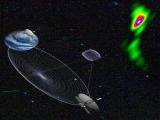
|
26/01/2016
The highest angular resolution image in Astronomy reveals the insides of a galactic nucleus The space mission RadioAstron (Russian Space Agency) has observed, along with fifteen other radio telescopes distributed around the globe, the environment of the black hole at the core of the active galaxy BL Lacertae |
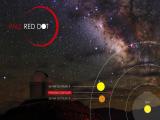
|
15/01/2016
Follow a Live Planet Hunt! A unique outreach campaign has been launched that will allow the general public to follow scientists from around the globe as they search for an Earth-like exoplanet around the closest star to us, Proxima Centauri. The observing campaign will run from January to April 2016 and will be accompanied by blog posts and social media updates. No one knows what the outcome will be. In the months following the observations, the scientists will analyse... |

|
15/01/2016
The European Space Agency (ESA) will search for potentially dangerous objects from Calar Alto ESA and Calar Alto have signed a collaboration agreement for the exclusive remote use of the 80 cm. Schmidt Telescope. |

|
14/12/2015 - 11:30
Challenges of the Doppler technique in the presence of stellar noise for the detection of Earth-like exoplanets The Doppler method is still the most efficient one in detecting exoplanets around nearby stars which are amenable for further characterization. In particular, planets as small as the Earth can in principle be detected in hot orbits around sun-like stars (G and K dwarfs), and warm to temperate orbits around M-dwarfs (M<0.5 sun) in orbital periods from a few days to tens of days. Unfortunately, these time-scales are plagued with structured... Dr. Guillem Anglada-Escude |
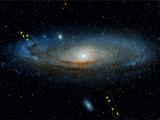
|
11/12/2015
History of Andromeda galaxy studied through stellar remains Planetary nebulae, stars similar to the Sun which have burnt up their fuel and ejected their external layers, make it possible to study two main substructures of the Andromeda galaxy |

|
03/12/2015 - 13:30
Presence and future of adaptive optics at the ESO VLT In this brief talk I will present the current and near-future adaptive optics (AO) capabilities of ESO's VLT. I will report on a recent meeting at ESO, where we discussed science cases for future AO instrumentation at the VLT in the era of the E-ELT. Probably within the next year, the science cases for a 3rd generation AO instrument (to arrive at the VLT in ~ 2025) will be laid down in a white paper. The goal of my talk is to get the IAA... Rainer Schoedel |
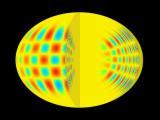
|
30/11/2015
Researchers from the IAA and the UGR question results obtained heretofore in the study of pulsating stars A study using the high precision satellites CoRot and Kepler has pointed to two examples which put in question the use of a tool common to most studies of stellar oscillations |

|
26/11/2015 - 13:30
Following the posterior with the ALHAMBRA survey The probability distribution functions (PDFs) provided by photometric redshift codes such as BPZ are a powerful tool for galaxy evolution studies. Despite of their potential, only a few studies in the literature attempt to use the full PDFs in their analysis and we are still learning how to make the most of them. We present the latests PDF advances from the ALHAMBRA survey, focusing in the estimation of the B-band luminosity function. We... Carlos López-Sanjuan |

|
12/11/2015 - 13:30
High Spatial Resolution 2D Nebular Abundances in Disk Galaxies Galaxies evolve through the changes that face their various components such as the gas, dust, stars, and dark matter. Gas and dust are prime ingredients for the formation of new stars, and thereafter the massive stars newly formed will quickly modify the chemical composition of galaxies whereas low mass stars will take more time to contribute to the interstellar gas enrichment. Beside the stars, other processes occurring during the galaxies... Laurie Rousseau-Nepton |

|
08/10/2015
The Institute of Astrophysics of Andalusia receives the medal of honor of the Foundation Rodríguez-Acosta The medal has been awarded for his research and as a center of international reference |

|
18/10/2015
Infrared ‘eye’ arrival completes CARMENES instrument, which will see its first light in November The infrared channel, developed at the Instituto de Astronfísica de Andalucía (IAA-CSIC), will be tomorrow placed in its final location, at the 3.5m Calar Alto Observatory telescope |

|
08/10/2015 - 14:30
Dissecting a rare galaxy merger (the Hummingbird) with radio and mm-observations The Bird is a luminous infrared galaxy product of a triple merger. Previous infrared observations have shown that the ongoing star formation in the least massive of the components (the head) outshines that of the mprimary nuclei (the heart and the body). This clashes with the commonly accepted major merger scenario in which the SF is expected to be higher in central compact regions. Here I will present preliminary results... Cristina Romero-Cañizales |
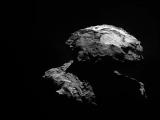
|
27/09/2015
Rosetta mission confirms comet 67P to be product of fusion of two independent objects Cometary lobes collided together very slowly during formation of the Solar System |

|
24/09/2015 - 14:30
Test In Space, your opportunity to experiment in orbit Traditionally, experimentation in space has consisted in limited, expensive, long-term and complicated projects with hard requirements and restrictions. Currently, new space increases the possibilities to experiment in space for researchers from all kind of fields and, with TEST IN SPACE, this is also simple and fast. If you are interested in investigation under real space environment, you can just propose it to TEST IN SPACE. TEST IN SPACE... tbd |

|
17/09/2015 - 14:30
Baryon Acoustic Oscillations and the Expansion History of the Universe The tiny inhomogeneities left over from the inflationary phase seeded the early Universe with primordial density perturbations. The photon-baryon fluid reacted to these perturbations by forming spherical pressure waves known as baryon acoustic oscillations (BAO). These waves propagated through the primordial plasma until the Universe became transparent to radiation, effectively stopping the dragging of the baryons by the photons. This left... A. J. Cuesta, on behalf of the BOSS Collaboration |
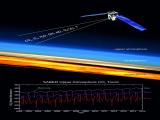
|
15/09/2015
Concentration of carbon dioxide on the rise in upper layers of Earth’s atmosphere The SABER instrument, aboard the TIMED satellite (NASA), has measured an increase of between five and twelve percent per decade in the concentration of CO2 in the top atmospheric layers |

|
11/09/2015 - 14:30
Untold Stories of Andromeda: A Multi-wavelength View of The Nuclear Environment in M31 The Andromeda galaxy (M31), which harbors the nearest LINER and the closest stellar bulge accessible in the optical, is an ideal laboratory for studying the physical regulation of galactic nuclei, and in turn the co-evolution of super-massive black holes and their host galaxies. I will provide an overview of the stellar and interstellar components of the M31 bulge, as well as its dormant but otherwise well-known SMBH, M31*. I will introduce... Prof. Zhiyuan Li |

|
11/08/2015 - 13/08/2015
XXIX IAU General Assembly, Focus Meeting 10: Stellar explosions in an ever-changing environment Hawaii |
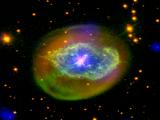
|
27/07/2015
Abell 78: the born-again star Abell 78 suffered a late thermonuclear blast that took it back for a while to a previous stage |
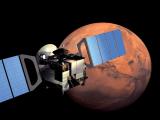
|
09/07/2015
UPWARDS, a cutting-edge project for global understanding of Mars Co-ordinated by the Instituto de Astrofísica de Andalucía (IAA-CSIC), the project involves seven European scientific institutions which are developing new analytical techniques to exploit the Mars Express and the future ExoMars missions |
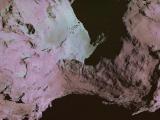
|
01/07/2015
Activity inside pits of comet 67P observed by the Rosetta mission helps to explain their origin Origin of circular depressions found on various comets has finally been discovered thanks to the observations of the OSIRIS camera aboard the Rosetta mission (ESA) |

|
24/06/2015 - 16:30
Autoorganización, propiedades emergentes y algoritmos genéticos La naturaleza tiene una forma muy eficaz de producir individuos capaces de adaptarse a ambientes cambiantes y de resolver problemas complejos. En esta charla hablaremos de como podemos inspirarnos en esto para realizar algoritmos que resuelvan tareas que de otro modo serían imposibles, y por el contrario, también veremos como con reglas muy sencillas podernos replicar el comportamiento de sistema muy complejos. Pablo Galindo Salgado Sala de Juntas del Instituto de Astrofísica de Andalucía (IAA-CSIC) |

|
17/06/2015 - 14:30
Into Darkness: the seek for pulsars in the Galactic Centre Pulsars are highly-magnetized rotating neutron stars that emit beams of electromagnetic emission. They are unique astronomical laboratories, not only because they are the most magnetized, densest, directly-observable objects in the Universe, but also because they act as extremely precise clocks located all over the Galaxy. The variety of science enabled by pulsars is very broad, from, e.g., limits on the Equation-of-... Pablo Torne |

|
17/06/2015 - 09:00
Presentación y visita guiada al laboratorio de scattering del IAA En el laboratorio CoDuLab (Cosmic Dust Laboratory) investigamos algunas propiedades físicas del polvo que podemos encontrar en atmósferas planetarias y cometarias. En esta charla presentaremos el laboratorio, la motivación del mismo y algunas de las muestras con las que trabajamos. Una vez acabada la charla se hará una visita al mismo Jesús Escobar Cerezo Sala de Juntas del Nuevo Edificio (IAA-CSIC) |

|
15/06/2015 - 14:30
The influence of dynamics on airglow and constituents in the terrestrial mesopause region In the terrestrial atmosphere, the mesopause region (~90 km height) is a transition region between the inviscid lower/middle atmosphere and the geomagnetically forced geospace. It is a region of strong dynamical forcing and where several constituents vary strongly with height one of which is atomic oxygen. Airglow, which is the result of naturally occurring chemiluminescence in the mesopause region involving exothermic reactions associated... Prof. William Ward |

|
11/06/2015 - 14:30
Ubiquitous magnetic flux emergence in the Sun: a fundamental process The fundamental process of magnetic flux emergence happens continuously and everywhere over the solar surface, hence the ubiquitousness. No matter which spatial (granular, supergranular, active region) and temporal scale we look at buoyant magnetic field coming from the convection zone pierces the photosphere in the form of two opposite polarities and travels upwards through the solar atmosphere. We will describe the general characteristics... Ada Ortiz Carbonell |

|
09/06/2015 - 14:30
Massive Star Formation at the Puerto Varas Workshop The recent decades have witnessed major advances in our understanding of the formation of solar-mass stars. However, the formation mechanisms of stars at the extremes of the mass range, that is, on one hand very massive stars and in the other brown dwarfs, remain poorly understood. I will summarize the main results presented in a recent meeting on massive star formation that took place in Puerto Varas,... Luis F. Rodriguez |

|
28/05/2015 - 14:30
Observing the onset of outflow collimation in a massive protostar: assembling the puzzle The current paradigm of star formation through accretion disks, and magnetohydrodynamically driven gas ejections, predicts the development of collimated outflows, rather than expansion without any preferential direction. We present radio continuum observations of the massive protostar W75N(B)-VLA 2, showing that it is a thermal, collimated ionized wind and that it has evolved in 18 years from a compact source into an elongated one. This... José María Torrelles |

|
24/05/2015 - 28/05/2015
Polarization in the Sun, the Solar System, and Beyond Granada |

|
21/05/2015 - 22/05/2015
Amazing science with CARMENES Granada |

|
18/05/2015 - 23/05/2015
3rd SOLARNET School on "Solar Magnetic Fields: Modeling and Measuring Techniques" Granada |

|
14/05/2015 - 14:30
ASKAP Commissioning and Early Science The Australian Square Kilometre Array Pathfinder (ASKAP) is a new generation low frequency (700-1800 MHz) interferometer capable of a wide instantaneous field of view of 30 square degrees, which is realised with the Phased Array Feed (PAF) technology. The first stage of the instrument, which consists of 6 first generation PAFs and is called Boolardy Enigeering Test Array (BETA), has been brought into operations... Maxim Voronkov |
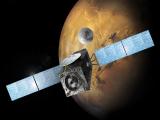
|
13/05/2015
IAA codirects NOMAD, an instrument that may solve the enigma of methane on Mars In eight months’ time, an instrument called NOMAD will fly to Mars aboard the ExoMars mission of the European Spatial Agency (ESA) |

|
11/05/2015 - 13/05/2015
Workshop estallidos 2015: census and fundamental properties of star-forming galaxies Granada |

|
06/05/2015 - 15:00
Observaciones radiointerferométricas de discos de transición Los discos de transición son discos protoplanetarios con cavidades o huecos en sus zonas internas. Se han sugerido varios mecanismos para explica estas cavidades. El más aceptado y apoyado tanto por simulaciones como por observaciones es el del vaciado de material debido a la interacción gravitatoria del disco con un planeta recién formado. En esta charla explicaré cuáles son los rasgos observacionales característicos de los diferentes... Enrique Macías Sala de Juntas del Instituto de Astrofísica de Andalucía (IAA-CSIC) |

|
30/04/2015 - 14:30
Seven Solutions: industria para las grandes infraestructuras científicas en Granada Seven Solutions es una compañía tecnológica con amplia experiencia diseño de electrónica, software empotrado y mecánica. Colabora con empresas como Indra, Thales, Cibernos, Siemens o National Instruments. Seven Solutions cuenta con una dilatada experiencia en el campo de la industria de la ciencia, participando activamente en iniciativas open hardware como el OHWR.org.... Javier Díaz Alonso |

|
16/04/2015 - 14:30
The San Pedro Mártir observatory and its UBVRI photometric survey of Galactic clusters A short presentation of the San Pedro Martir Observatory will be given including its astroclimatic characteristics and its projects for the near future. I will then present the current status of our ongoing survey aimed at generating a homogeneous catalogue of physical parameters of stellar clusters in our Galaxy. It is expected that this data will allow the study of the properties of the galactic disk more accurately and reliability, helping... Raul Michel Murillo |

|
09/04/2015 - 14:30
Ionized gas in the CALIFA galaxies We present here the most recent results we have obtained in our exploration of the gas abundances using the IFU data from the CALIFA survey. Using our own developed tools we have extracted the ionized gas properties of ~10.000 HII regions, in order to explore: (i) the relation between these properties and those of the host galaxies and the underlying stellar population; (ii) the local relation between the gas... Sebastian Sanchez |
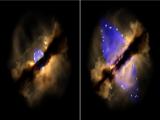
|
30/03/2015
Emergence of a stellar jet observed in real time The observation over an eighteen year span of the formation of a massive star has unveiled the birth of a bipolar jet which ejects matter and regulates the star’s growth |

|
26/03/2015 - 13:30
FROM ALHAMBRA TO JAVALAMBRE. A SCIENTIFIC PROJECT The Observatorio Astrofísico de Javalambre, with its 2 very wide field telescopes has been purposely built to conduct large scale surveys. The use of medium-narrow band filters, pioneered by the ALHAMBRA project, will produce a low resolution spectrum of every pixel in the sky. The first defined projects, J-PLUS@T80 and J-PAS@T250 are driven by the study of the nearby Universe and the study of dark energy... Prof. Mariano Moles Villamate |

|
25/03/2015 - 17:00
Charla especial en recuerdo a Manuel Félix. El fotón viajero: un paseo por los planetas. Manuel Félix Herrera Gómez hizo el Trabajo Fin de Máster (TFM) con el grupo de José Luis Ortiz y empezó su tesis en el grupo de Manuel Lopez Puertas. Con motivo de recordar su memoria los estudiantes de doctorado del Instituto de Astrofísica de Andalucía hemos querido que las charlas realizadas por nosotros lleven su nombre. Además, en 2003 tuvo lugar el descubrimiento del asteroide 2003 ES desde el Observatorio de Sierra Nevada,... Francisco José Pozuelos Romero, Estela del Mar Fernández Valenzuela y Zaira Modroño Berdiñas Salón de Actos del Instituto de Astrofísica de Andalucía (IAA-CSIC) |
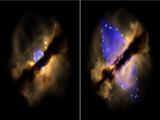
|
25/03/2015
Real time gestation of stellar jet Stars birth and grow inside big clouds made of gas and dust by gravitational collapse of overdensity areas. |
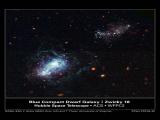
|
23/03/2015
IZw18: the galaxy that reveals the history of the universe A map of ionized helium in the galaxy has just been published which indicates the presence of peculiar stars similar to the first that ever shone in the universe |

|
12/03/2015 - 13:30
AirPlay Service The Computer Center has launched a new service called AirPlay with aim of provide the users the projection of multimedia contents via wireless (WiFi). This will allow to make presentations from laptops or mobile devices without the need of any wiring connection, contributing greater ease and mobility to the speaker. In this seminar will explain the configuration and use procedures of the AirPlay service for devices with Android, iOS, OS X,... Francisco Manuel Bayo Muñoz |
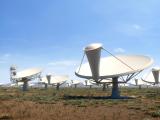
|
09/03/2015
The world’s largest radio telescope takes a major step towards construction The Square Kilometre Array (SKA), the largest research infrastructure ever developed, has already a final design for the first phase of the project |

|
05/03/2015 - 13:30
Understanding the obscuring torus and the nuclear star formation of AGN using GTC/CanariCam observations The fueling of black holes occurring in active galactic nuclei (AGN) is fundamental to the evolution of galaxies. AGN themselves are largely explained in the context of a unified theory, by which a geometrically and optically thick torus of gas and dust obscures the AGN central engine. The torus intercepts a substantial amount of flux from the central engine and and reradiates it in the infrared. There are still many... Almudena Alonso-Herrero |